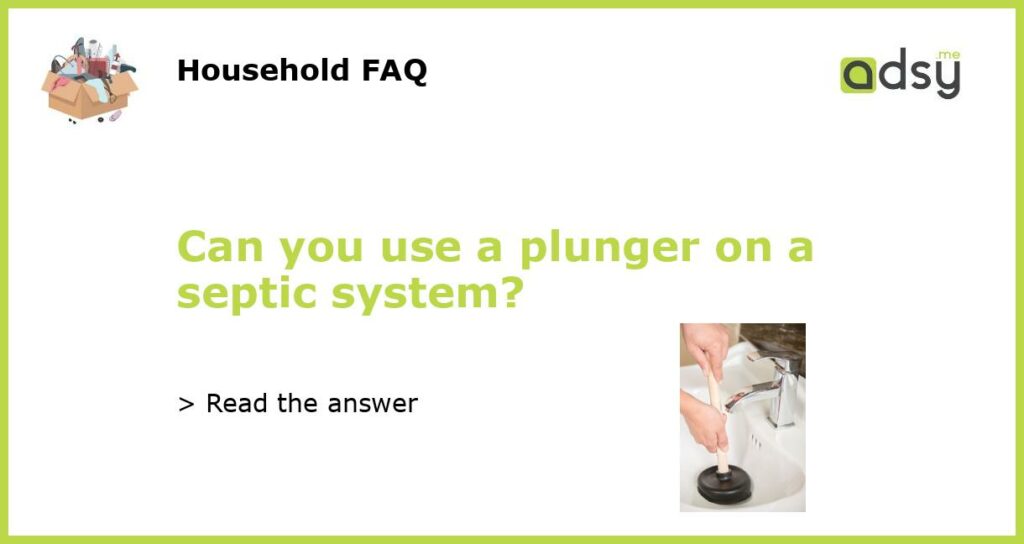Can you use a plunger on a septic system?
If you’ve ever had a plumbing issue, you’re probably familiar with the trusty plunger. It’s a simple tool that can clear clogs in sinks, toilets, and drains. But what about using a plunger on a septic system? Can it help with clogs and backups in your septic system? In this article, we will explore whether using a plunger on a septic system is a good idea, or if it can cause more harm than good.
Understanding septic systems
Before delving into the effectiveness of using a plunger on a septic system, it’s important to understand how septic systems work. Septic systems are underground wastewater treatment structures, commonly used in rural areas, that treat and dispose of household wastewater. They consist of a septic tank, which holds the waste, and a drain field, where the treated wastewater is released into the soil for further purification.
The risks of using a plunger
When it comes to using a plunger on a septic system, there are several risks involved. First and foremost, using a plunger can potentially damage the delicate components of the septic system. The force created by plunging can cause the pipes to crack or separate, leading to leaks and further damage.
Additionally, using a plunger can disrupt the balance of bacteria in the septic tank. Septic tanks rely on a delicate balance of bacteria to break down solid waste and treat wastewater effectively. Introducing excessive force through plunging can disrupt this balance and hinder the treatment process.
Safer alternatives
Instead of using a plunger to clear a clog in your septic system, there are safer alternatives you can try. One option is to use enzymatic drain cleaners. These cleaners contain natural enzymes and bacteria that break down organic waste, helping to clear clogs and maintain the balance of bacteria in the septic system.
If the clog persists or you suspect a more serious issue with your septic system, it’s best to contact a professional septic system service provider. They have the expertise and specialized equipment to address septic system issues safely and effectively.
Preventing clogs in the first place
While it’s tempting to resort to plunging when faced with a septic system clog, prevention is always better than cure. Taking preventative measures can help reduce the likelihood of clogs and backups in your septic system. Here are some tips:
- Avoid flushing non-biodegradable items down the toilet
- Limit the use of harsh chemicals, such as bleach and drain cleaners
- Dispose of cooking oils and grease properly, instead of pouring them down the drain
- Regularly pump and maintain your septic tank
- Be mindful of water usage, and avoid excessive flushing and running water
In conclusion
Using a plunger on a septic system is not recommended due to the potential risks involved. It can damage the septic system components and disrupt the balance of bacteria, compromising the effectiveness of the system. Instead, consider using enzymatic drain cleaners or contacting a professional septic system service provider for safer alternatives. Taking preventative measures to avoid clogs and backups is also essential for maintaining a healthy septic system.






